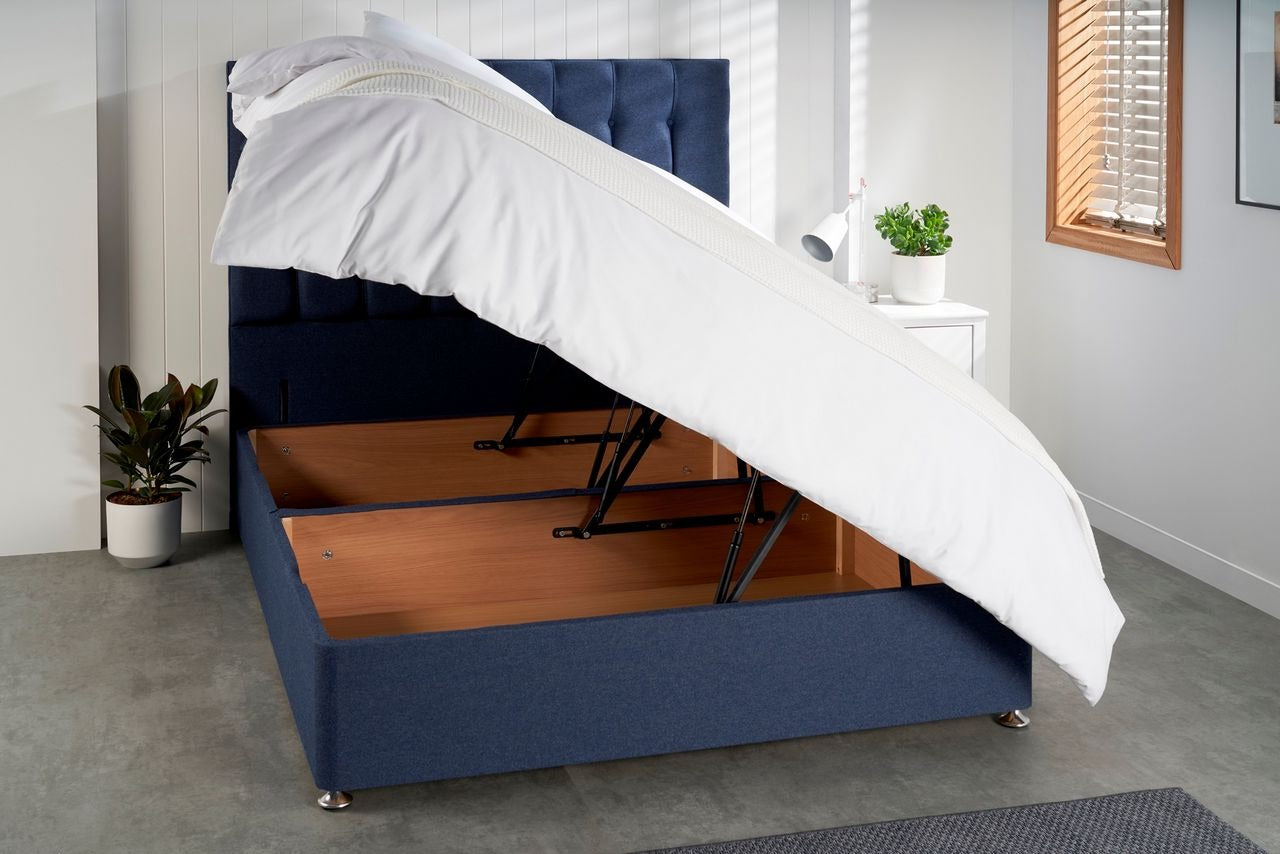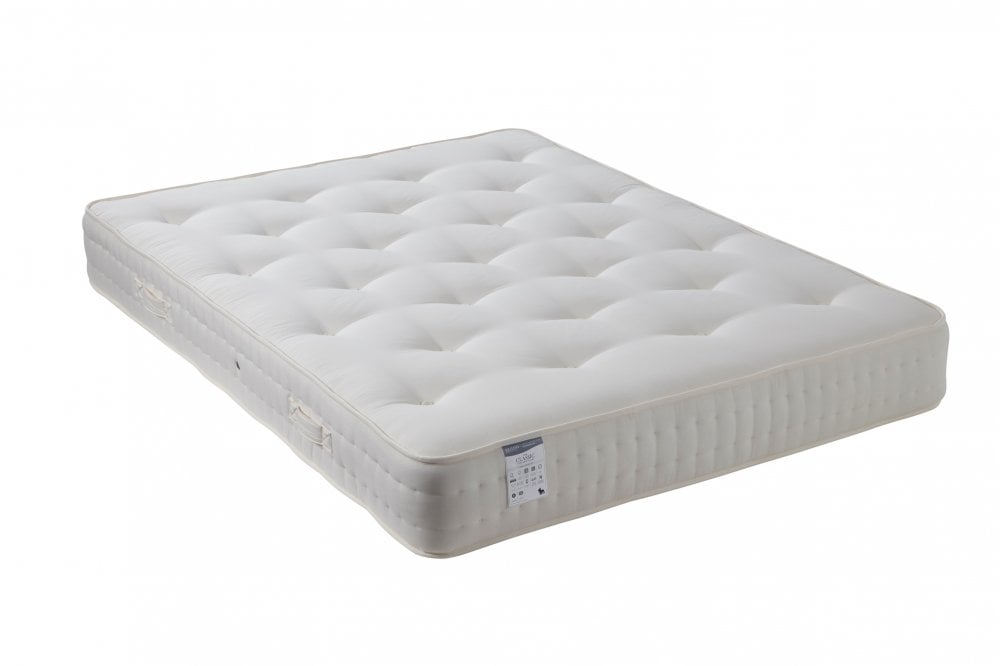
Selecting the perfect mattress can take a lot of time and effort, especially with so many types and designs available today. When you’ve found the right mattress to suit your needs, it’s important to give it the right amount of care and maintenance to ensure that you get optimum comfort while sleeping and extend the life of your mattress. While all mattresses can naturally deteriorate over time, you can take steps to protect your chosen mattress and help it last for as long as possible.
Here at British Beds Direct, we pride ourselves on offering excellent mattress care advice guaranteed to help you get the best from your mattress. Our guide looks at everything you need to consider, including how to protect your mattress, how to clean it at home and knowing when to replace it. Use our maintenance tips to keep your mattress looking and feeling as good as new, allowing you to experience a great night’s sleep for longer.
Contents
1.How do I protect my new mattress?
1.1. Changing your sheets regularly
1.2. Do I need a mattress protector for my bed?
1.3. What kind of mattress protector is best?
2. How can I clean my mattress at home?
2.1. What to put on a mattress to freshen it up
2.2. Should you vacuum your mattress?
3. How to make your mattress last longer
3.1. How often should you turn a new mattress?
4. When to replace a mattress
How do I protect my new mattress?
Caring for your mattress should begin as soon as you bring it home to achieve the best results. Looking after your mattress when it is brand new will help it to maintain its original state for as long as possible.
Changing your sheets regularly
One of the easiest ways to protect your mattress and maintain cleanliness is to change your bedding regularly. While this might seem obvious, there are many reasons why you should prioritise keeping your sheets clean, as they naturally accumulate sweat, oil and other dirt, which could seep into your mattress over time. They also attract dust mites, which can aggravate allergies. We recommend washing your sheets and pillowcases at least once a week to keep them clean and fresh. This may need to be done more often if your pets sleep with you. Duvet covers can be washed once a month, and other bedding items such as blankets and comforters can be washed every two to three months, as these typically aren’t close to your body when you’re sleeping.
Do I need a mattress protector for my bed?
A mattress protector is an extra layer that fits onto your bed beneath the fitted sheet. An essential part of any bedding set, it acts as a barrier to keep moisture, dirt, dust mites and other contaminants from entering your mattress. As many are waterproof or water-resistant, they can also prevent mould and mildew growth, keeping your mattress in pristine condition. Choosing a good-quality mattress protector will help prolong the life of your mattress.
What kind of mattress protector is best?
The best type of mattress protector for you to choose is down to personal preference. There are many different types of mattress protector, including waterproof, quilted, towelling and fleece. You can also buy mattress encasements, which protect all six sides of your mattress, offering complete protection. Ensuring your mattress stays clean is vital for keeping it in good condition and maintaining warranty coverage.
How can I clean my mattress at home?
Even if your mattress is in good condition, it’s beneficial to give it a deep clean every so often to keep your sleeping area fresh and hygienic. It’s easy to do this at home, so use our tips to vacuum, deodorise and remove stains from any mattress.
What to put on a mattress to freshen it up
The most effective way to freshen up your mattress is by airing it out regularly. Each time you remove your bedding, open the windows and ventilate your bedroom. This will allow your mattress to breathe, eliminating any odours and keeping it smelling fresh. If you wish to deodorise your mattress to keep odours away for longer, sprinkle a layer of baking soda over its surface and leave it to sit for a few hours. Once your mattress smells clean and fresh, vacuum away the baking soda before putting your bedding back on.
Should you vacuum your mattress?
Vacuuming your mattress helps eliminate any dirt, skin, hair and allergens that can build up on top and inside it over time. We recommend doing this every 3-6 months to keep your mattress in good condition and promote optimal sleep. Using your vacuum cleaner’s upholstery attachment, clean the entire mattress surface thoroughly to remove dust and dirt and leave it looking and feeling as good as new. Once this has been removed, you can focus on removing any spills or spots from the fabric if you need to.
How to make your mattress last longer
While all of the points mentioned previously will help to extend the life of your mattress, there are also a few other tips for you to keep in mind to make it last even longer. These include ensuring that your mattress is properly supported, avoiding jumping on the bed and keeping food and pets far away from your mattress to keep it in its original state for longer.
How often should you turn a new mattress?
When you’ve been sleeping on your new mattress for a while, it’s likely to start sagging or developing indentations in the areas you usually lie. While this is normal, evenly breaking in the sleep surface can help you to avoid one part of it growing softer and less supportive than the rest. This is why it’s important to turn your mattress from head to foot regularly so that your mattress can continue to give you the comfort and support you need. Latex, foam and new sprung mattresses should be rotated every 6 to 12 months, while older sprung mattresses can be turned every 2 to 6 months. Sprung mattresses can also be flipped, allowing you to wear down both sides evenly. Always check your mattress’s care guide, as some specialist types aren’t designed to be turned or flipped.
When to replace a mattress
An old and worn mattress can have a negative impact on your sleep quality and your health. They usually have an average lifespan of eight years, but you should start paying attention to the quality of your mattress after the five-year mark. If it is beginning to feel uncomfortable, you’re waking up feeling tired and achy, and it shows telltale signs of wear and tear upon inspection, it’s likely time for an upgrade. This doesn’t apply to memory foam mattresses, however, as these can last for 10-20 years. This is because although they mould to your body shape as you sleep, they can return to their original shape after you get out of bed. The lifespan of any mattress depends on its quality, how often you sleep on it and how it is looked after. Taking proper care of your mattress will allow you to keep it looking and feeling brand new so that it can last you for as long as possible. Here at British Beds Direct, we offer high-quality mattresses in a range of sizes, types and comfort levels so that you can find the perfect option to support you as you sleep. Browse the collection today, or learn more about our mattress types and care advice by visiting our related posts.
Related
The Best Mattress for You Based on Your Sleeping Position
What Makes an Orthopaedic Mattress?
Sleep Easy: 8 Signs It’s Time to Buy a New Mattress


















